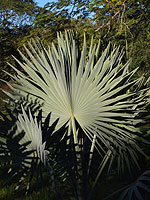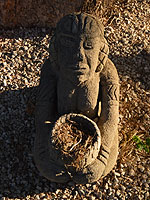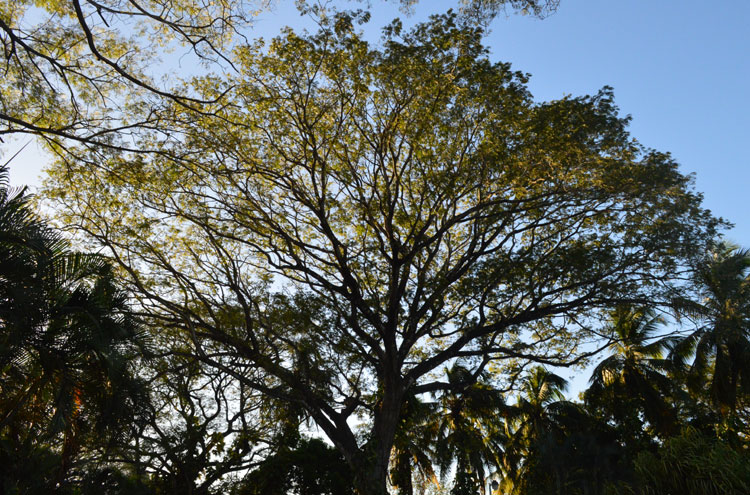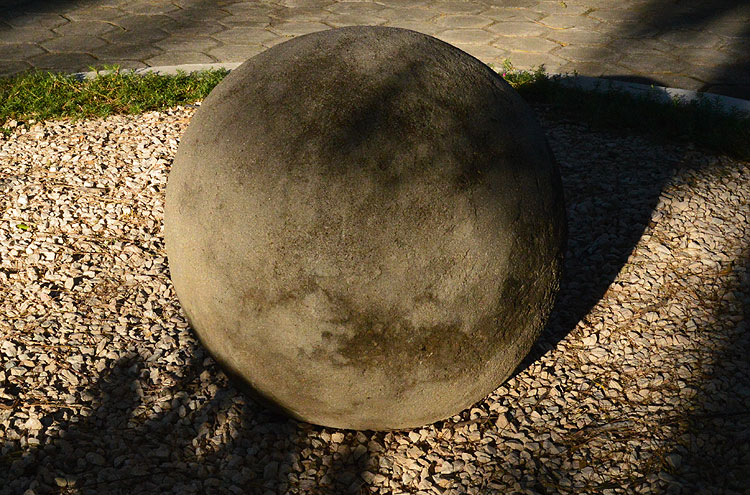

|
Tired and hungry, I took a taxi to my hotel, El Sitio, just down the road from the airport. I'm only here for one night, so location is more important than luxury at this point. Nevertheless, El Sitio has exceeded my expectations, with lush quiet gardens and a very helpful staff. The restaurant was just closing after I checked in, but I convinced the man at the bar to ask the chef if there might still be any ceviche. It was the perfect meal for the warm evening; the cold fish marinated in lime juice was delicious. I got up early this morning and went for the complementary breakfast, which I expected would just be coffee and toast. But there was a full buffet, with eggs, rice, beans, homemade bread, and juicy strips of ripe papaya. I spent some time after breakfast walking off the big meal, just as the day's heat was starting to build. The hotel has a small botanical garden, with a trail that loops around a pond. A large egret eyed me warily as I walked by, taking flight and refuge in one of the Guanacaste trees.  The sprawling canopy of a Guanacaste tree The Guanacaste tree (Enterolobium cyclocarpum), also known as the elephant-ear tree, is native to tropical forests from central Mexico all the way south to Brazil, but is especially prevalent here in this corner of Costa Rica. It gives its name to the province of Guanacaste and is also the national tree of Costa Rica. There are quite a few Guanacaste trees around the grounds of El Sitio, looking very majestic in their height and breadth. The tree has a very dramatic sprawling canopy that provides relief from the hot sun of Central America. Yes, it is HOT here. Also on the grounds of El Sitio is a Diquís Sphere. More than 300 of these perfectly symmetrical stone spheres have been excavated by archaeologists along the Diquís Delta in southern Costa Rica. Known as Las Bolas in Spanish, the spheres are estimated to have been created between 600 and 1000 A.D. by the Diquís people. This pre-Columbian indigenous culture flourished from around 700 A.D. to 1530 A.D. Little is understood about the spheres' purpose and a certain mythology has developed around them over the years. One legend says they are cannon balls used by Tlatchque, the god of thunder. Another tale purports them to have been recovered from the lost continent of Atlantis. My favorite theory, very pertinent to my expedition in Costa Rica, is that they are ancient sculptures of turtle eggs. In any case, their simple beauty and round perfection is awe-inspiring.  A Diquís Sphere I'm getting ready to go back to the airport now, where I'll meet up with my team for an Earthwatch expedition called Costa Rican Sea Turtles. Together we'll drive to Las Baulas National Marine Park, about an hour away on the Pacific Coast, near Tamarindo. It's a nine-day expedition, and we'll be monitoring and studying leatherbacks, the largest sea turtles in the world. |
||
|
||
|
© 2015 Michael Hanrahan
|